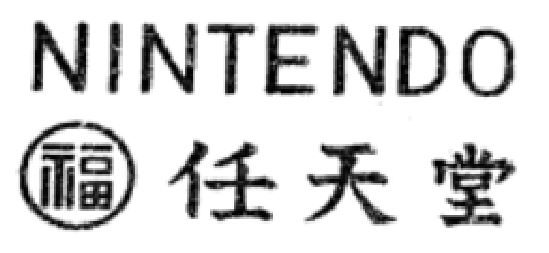
From a trademark registration in Japan Patent Office in 1953.
Nintendo Co., Ltd. is a company most-known today as a video game manufacturer, but started out as a manufacturer of Hanafuda and other Karuta. It was founded in September 1889 by Yamauchi Fusajirō (山内房治郎), who named the company Yamauchi Nintendo (山内任天堂).
In 1902, they started selling the first locally-produced western playing cards in Japan.
Nintendo’s manufacturer’s mark is a circled 福 (fuku, ‘fortune’), called Marufuku (丸福, lit. ‘circle fortune’).
The meaning of the name ‘Nintendo’ is not exactly known, but a U.S. Patent Office trademark describes it as “a corporation whose fortune or prosperity should be left to the mercy of heaven”. This could possibly be the origin of the phrase “leave luck to heaven”, which is widely regarded to be the meaning of the name.
Despite being a full-fledged video game manufacturer, Nintendo still continues to manufacture Hanafuda today.
¶ Current Brands
Currently, Nintendo produces the standard Hanafuda pattern in 3 main brands, which differ only in the texture of the cards, and the packaging design.
| Brand | Label | Packaging | Card texture |
|---|---|---|---|
| Daitoryo (大統領, president) |
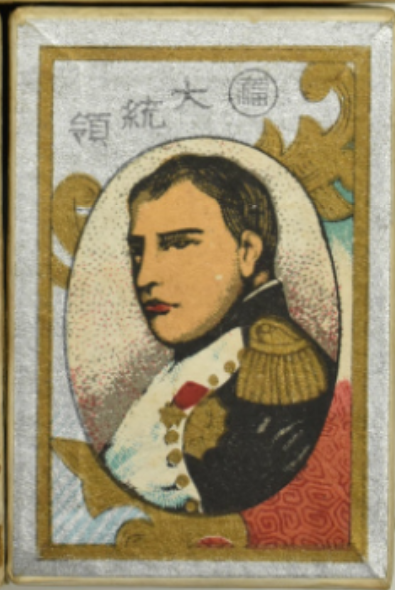 |
Beige-colored plastic box with a black/red flap that closes on both ends of the box. | Heavy clear-coat on the front; Glossy on the back |
| Tengu (天狗) |
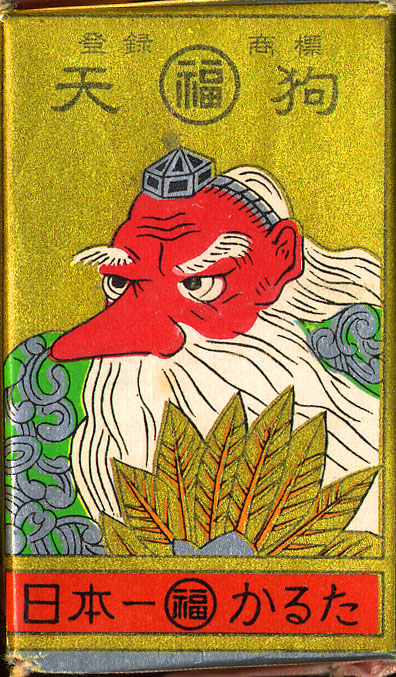 |
Beige-colored plastic box with a black/red flap that closes on both ends of the box. | Faint clear-coat on the front; Glossy on the back |
| Miyako no Hana (都の花, flowers of the capital) |
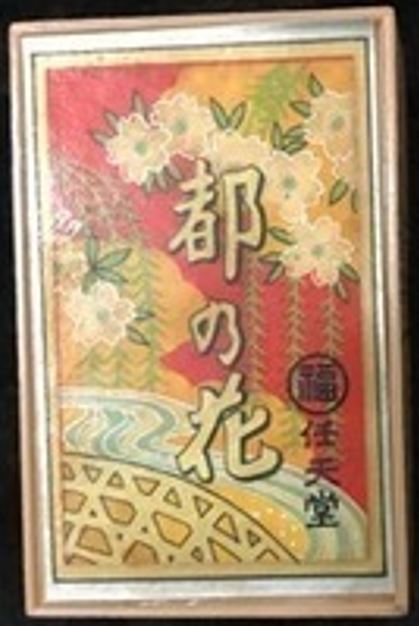 |
Two-piece clear plastic box. | Uncoated front; Slightly matte back |
Nintendo also uses a different brand called “Chiyozakura”, which was first released sometime in the 1990’s (possibly 1994) for sale in convenience stores. It has the same price as a Miyako no Hana deck, and the quality is the same.
| Brand | Label | Packaging | Card texture |
|---|---|---|---|
| Chiyozakura (千代桜, Thousand-year Sakura) |
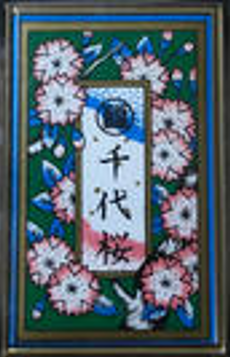 |
Two-piece clear plastic box. | Uncoated front; Slightly matte back (Same as Miyako no Hana) |
In addition to the standard hanafuda decks, Nintendo currently produces Mario Hanafuda, which was first released in Japan on November 2015, and features characters from the Super Mario and Donkey Kong series on all of the cards.
| Brand | Label | Packaging | Card details |
|---|---|---|---|
| Mario Hanafuda (マリオ花札) |
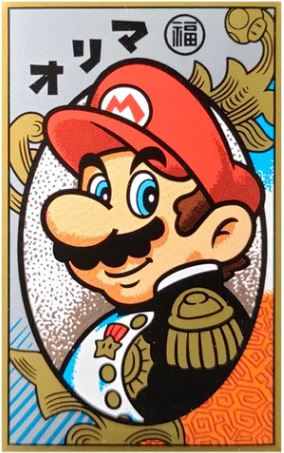 |
Two-piece clear plastic box. | Heavy clear-coat on the front; Glossy on the back (Same as Daitoryo). The card pattern is standard Hanafuda but with Mario and Donkey Kong characters on all of the cards |
¶ Discontinued Brands
Note: Includes some brands produced by Nintendo for other companies.
| Brand | Label | Rarity | Notes |
|---|---|---|---|
| Arashiyama (嵐山) |
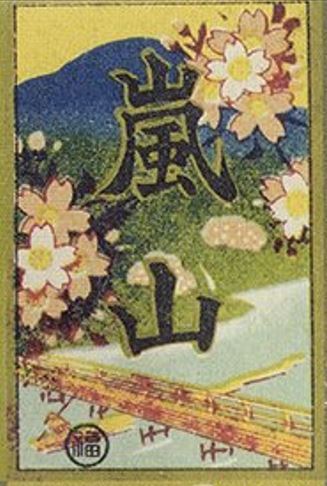 |
★★★★★★ Lost |
Appears in the Nintendo Company Guide 2019. |
| Asahi Sakura (朝日桜, Morning Sun Sakura) |
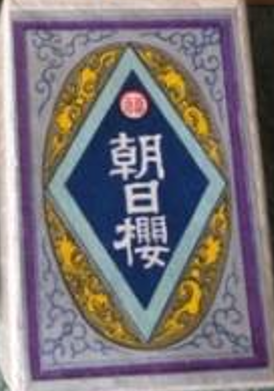 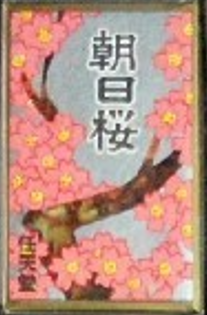 |
★ Common |
Came in two label designs. The first design was a diamond shape inside an oval, and shared the same label design with Goshozakura, Hyakuman-en, Kumoizakura, and Yaezakura. The second design looked similar to the label designs of Marufuku Sakura and Heian. |
| Azuma Tengu (東天狗, Eastern Tengu) |
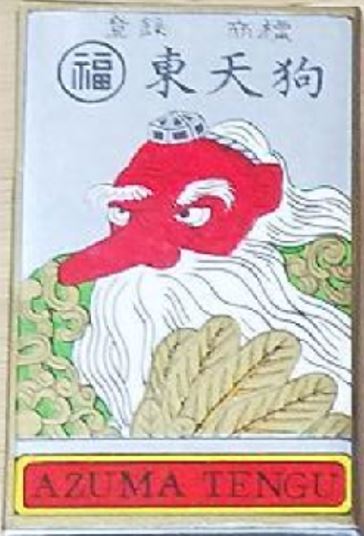 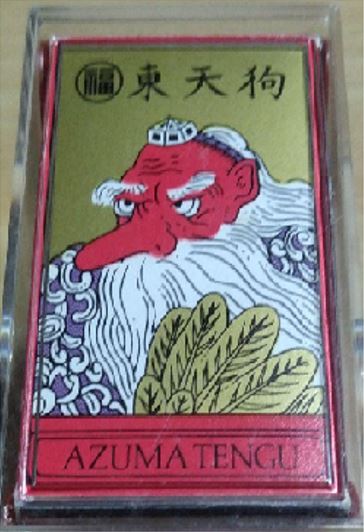 |
★★ Uncommon |
Same label design as Tengu, but with silver background instead of gold. Could be the replacement for the brand Gintengu. An example with a newer label design from 1999 had a gold background instead of silver, but the clothing of the Tengu was purple instead of green. |
| Banzai (萬歳, Live Ten Thousand Years) |
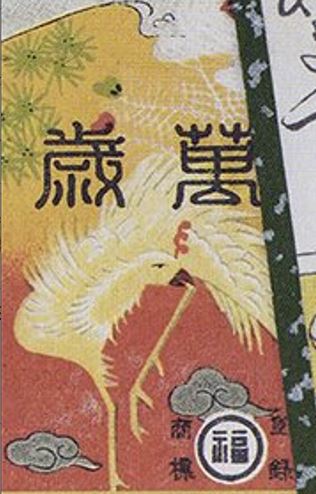 |
★★★★★★ Lost |
Appears in the Nintendo Company Guide 2019. |
| Chujo (中将, Lieutenant General) |
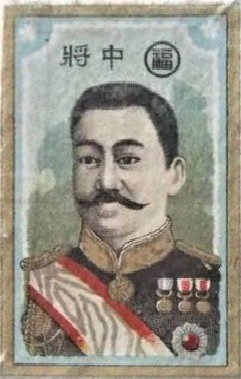 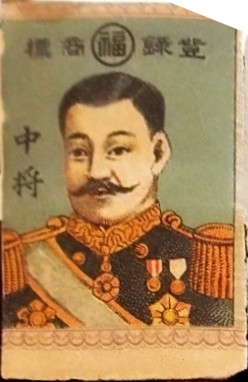 |
★★★ Rare |
Also used for shirofuda decks. |
| Daifuku (大福, Great Fortune) |
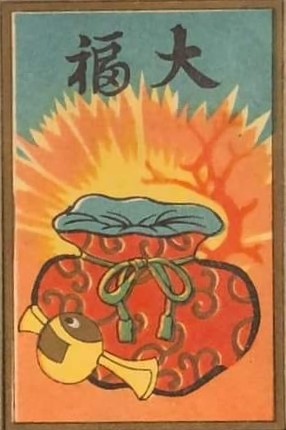 |
★★★★ Very Rare |
An unused wrapper with this label exists. Another example shows a paulownia box set of black and red decks. Appears in the Nintendo Brands and Chihofuda Poster from early Showa era. |
| Daikoku (大黒, short for Daikokuten) |
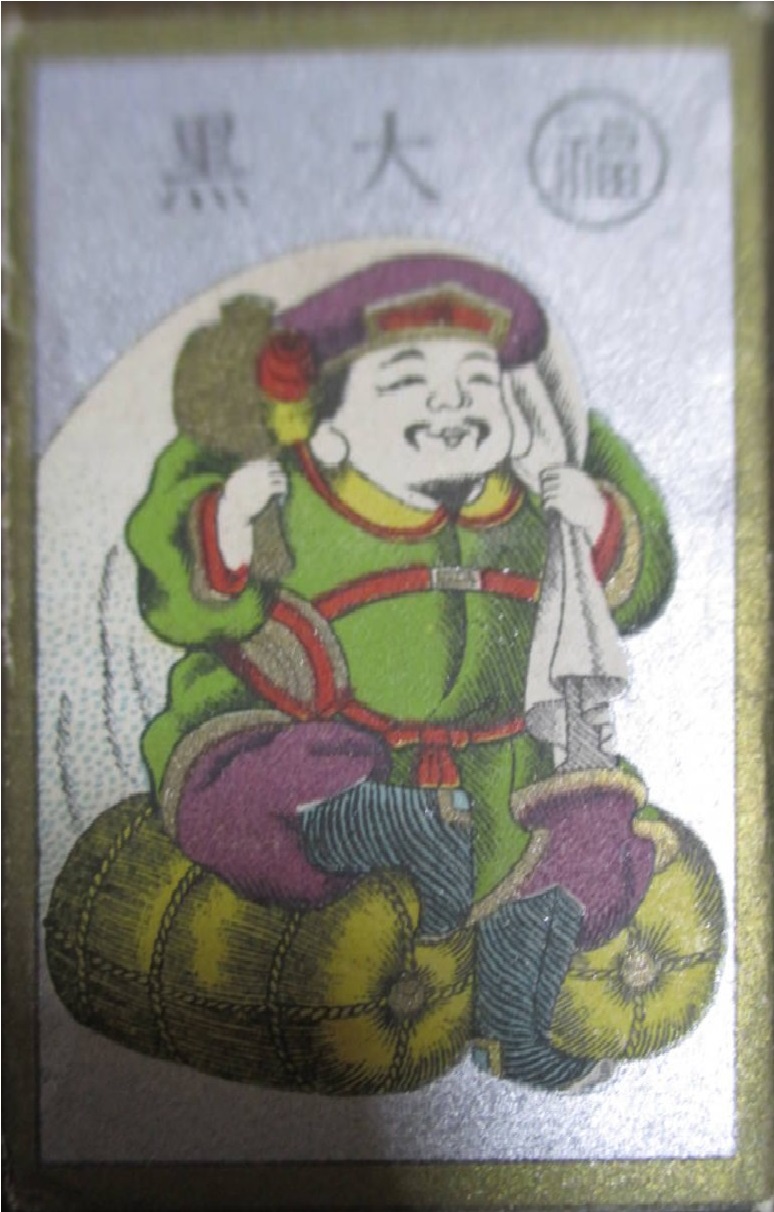 |
★★★★★ Unique |
Depicts Daikokuten, one of the Seven Lucky Gods. |
| Daioh jirushi (大王印, Great King mark) |
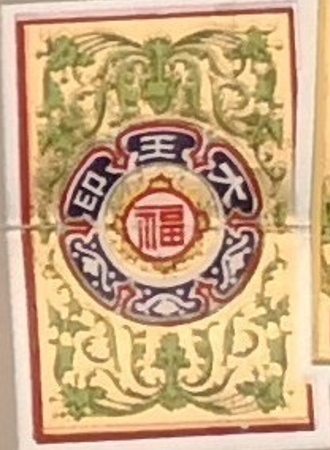 |
★★★★★ Unique |
Appears in the Nintendo Brands and Chihofuda Poster from early Showa era. Shares the same label design with Oedo. |
| Daitengu (大天狗, Great Tengu) |
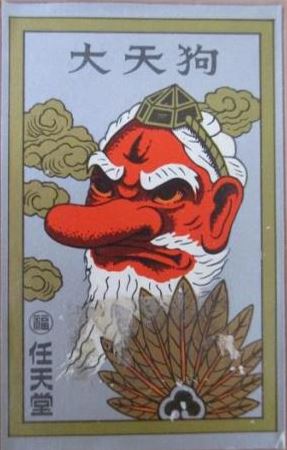 |
★★ Uncommon |
Introduced in 1977 as a brand ranking above Tengu, produced until as late as 1983. The label features a floating Tengu head among the clouds, in a silver background. |
| Eiyu (英雄, Hero) |
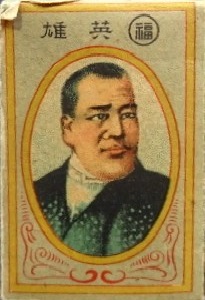 |
★★★★ Very rare |
Features a portrait of Saigo Takamori (西郷隆盛) |
| Fuji (不二, Peerless) |
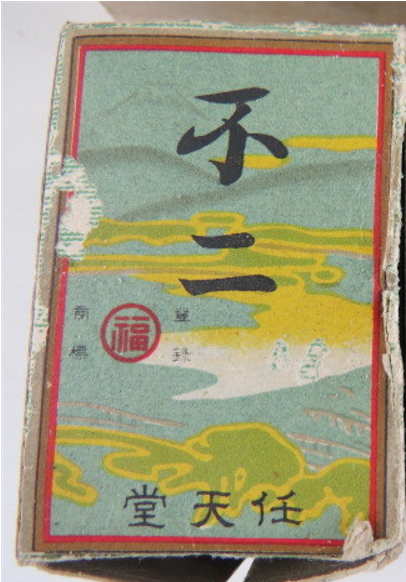 |
★★★ Rare |
|
| Fukuju (福壽, Fortune and Prosperity) |
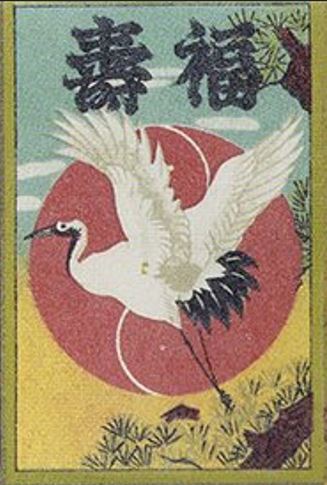 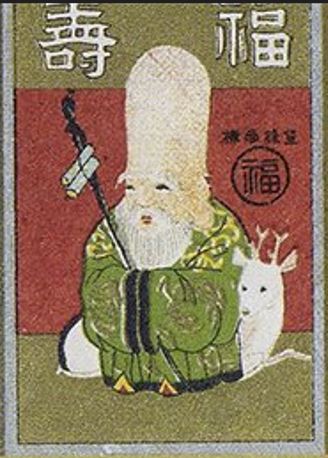 |
★★★★★ Unique |
Appears in the Nintendo Company Guide 2019. Two label designs are known to exist. The first one shares the same label design with Chitose. The second one depicts Fukurokuju, one of the Seven Lucky Gods. Second version is currently on display at the Nintendo Museum. |
| Ginsekai (銀世界, Silver World) |
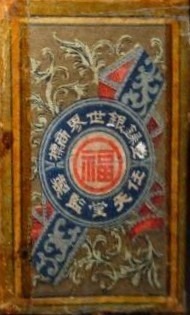 |
★★★★ Very rare |
Shares the same label design with Kaoh jirushi. Handprinted hanafuda deck. One deck is currently on display at the Nintendo Museum. |
| Gintengu (銀天狗, Silver Tengu) |
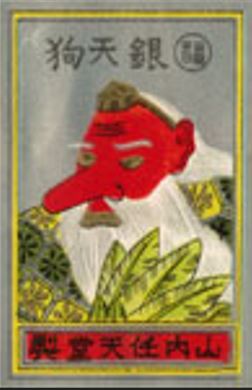 |
★★★★★ Unique |
Appears in the Nintendo Brands and Chihofuda Poster from early Showa era. Shares the same label design with Kintengu, except for the background color. Only a deck with an individual paulownia box (no printed label) exists. |
| Gion (祇園) |
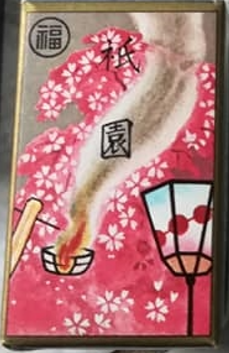 |
★★★ Rare |
|
| Goshozakura (御所櫻, Imperial Palace Sakura) |
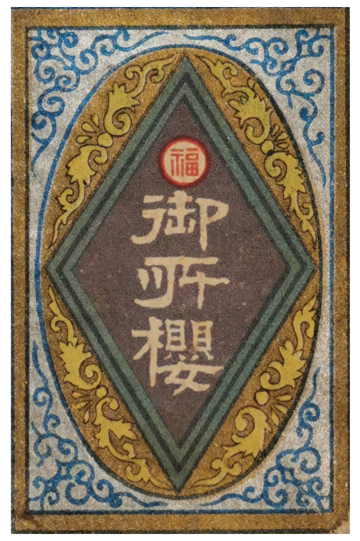 |
★★★★★ Unique |
Shares the same label design with Asahi Sakura, Hyakuman-en, Kumoizakura, and Yaezakura. |
| Hagoromo (羽衣, Angelic Clothing) |
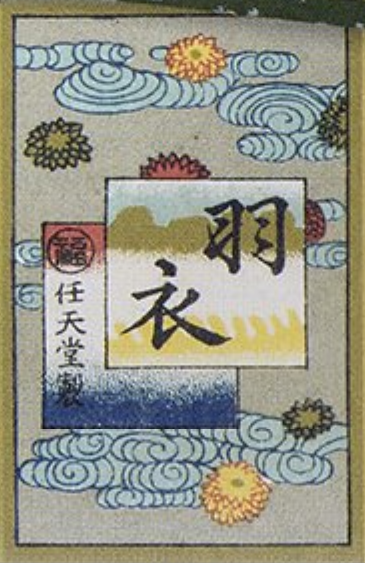 |
★★★ Very rare |
Shares the same label design with Kikusui. |
| Hakubai (白梅, White Plum) |
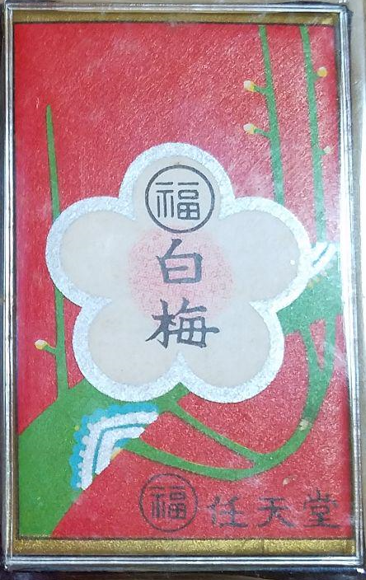 |
★ Common |
Shares the same label design with Ume jirushi. |
| Hakutsuru (白鶴, White Crane) |
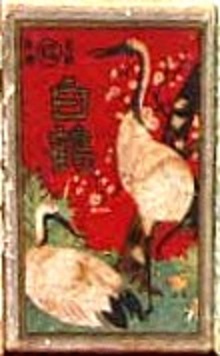 |
★★★★★ Unique |
|
| Hana no Yama (花の山, Mountain of Flowers) |
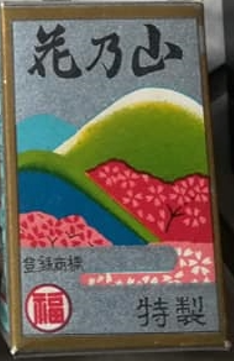 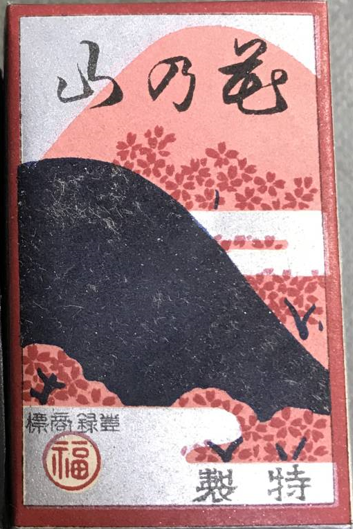 |
★★ Uncommon |
Shares the same label design with Tsukimi Yama. Has a similar label design to that of Sakura no Yama. There was a label variant where the mountains were pink and black instead of green. |
| Hanasato (花里, Flower Village) |
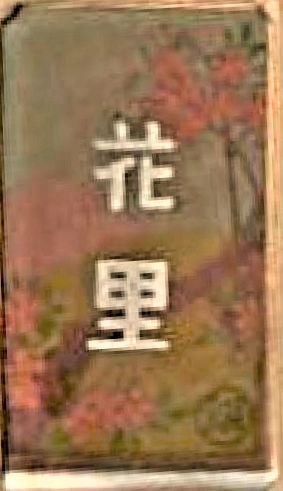 |
★★★★★★ Lost |
Appears in a photo by Yamauchi No. 10. |
| Hatsuzakura (初櫻,First Sakura) |
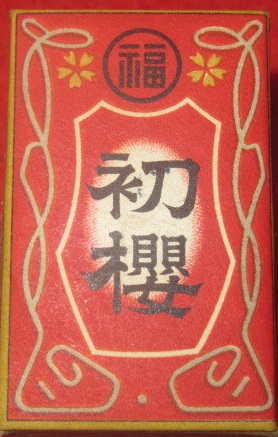 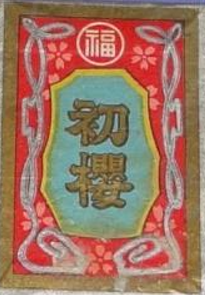 |
★★ Uncommon |
Came in two label designs, but there are only minor differences between them. |
| Heian (平安, Peace) |
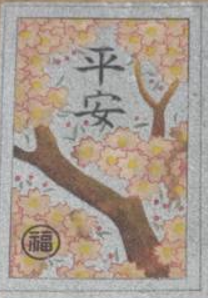 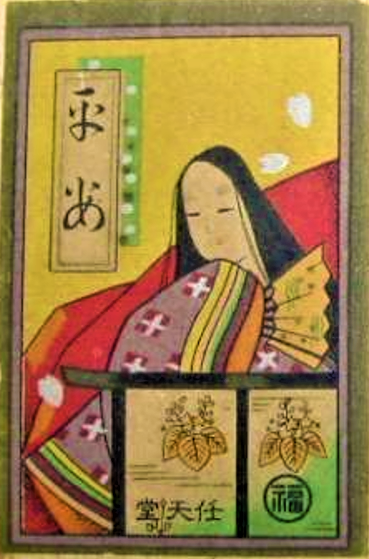 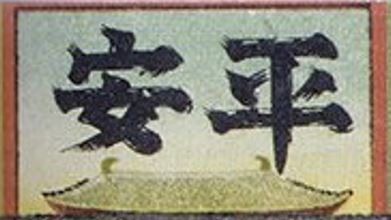 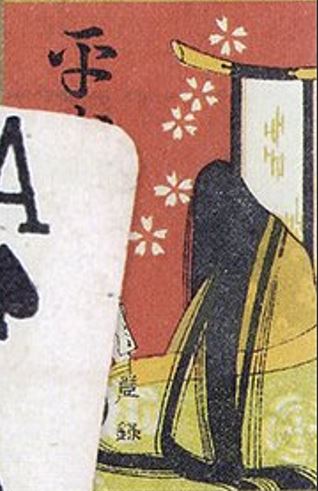 |
★★★ Rare |
Four label designs are known to exist. The first design was a Sakura tree on a silver background, and shared the same label design with Marufuku Sakura. The second design was a woman in Japanese clothing, against a yellow background. The third and fourth designs appear in the Nintendo Company Guide 2019, but are partially obscured. |
| Hi no De (日の出, Sunrise) |
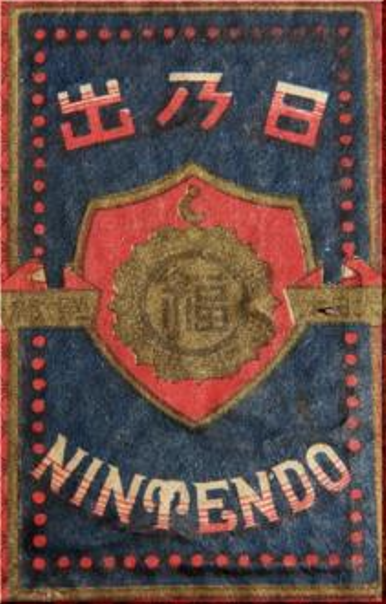 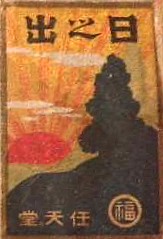 |
★★ Uncommon |
Came in two label designs. The first design was a red shield with a gold Marufuku logo on a dark blue background. The word ‘NINTENDO’ was printed in Romaji at the bottom part of the label. The second design was a sihouette of a pine tree on a mountain, with a red sun rising on a yellow background. |
| Hiruko (蛭子, another name of Ebisu) |
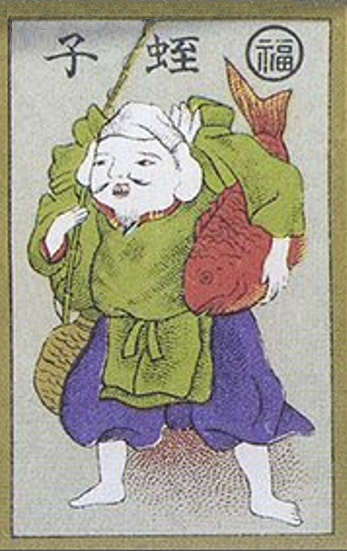 |
★★★★★ Unique |
Appears in the Nintendo Brands and Chihofuda Poster from early Showa era. Depicts Ebisu, one of the Seven Lucky Gods. |
| Ho-oh (鳳凰, Phoenix) |
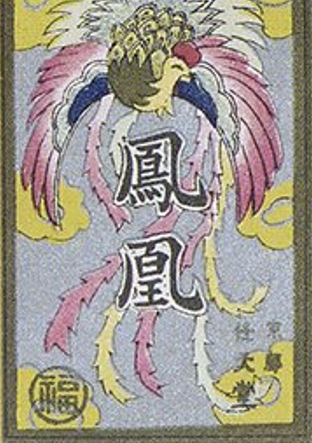 |
★★★★★★ Lost |
Shares the same label design with Kinpo. Appears in the Nintendo Company Guide 2019. |
| Hyaku-en (百圓, 100 yen) |
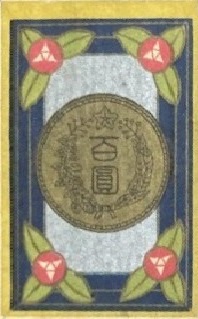 |
★★★★ Very rare |
|
| Hyakuman-en (百万圓, 1 million yen) |
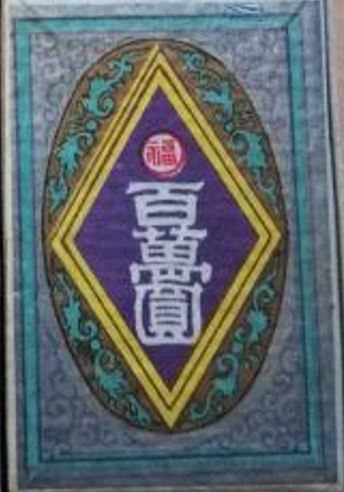 |
★★★ Rare |
Produced by Nintendo for Kamigataya. Shares the same label design with Asahi Sakura, Goshozakura, Kumoizakura, and Yaezakura. Usui Nikkagetsudo also carries this brand. |
| Kajo (霞城, Kasumi Castle) |
 |
★★★★★★ Lost |
Appears in a photo by Yamauchi No. 10. |
| Kame jirushi (亀印, Turtle mark) |
 |
★★★ Rare |
Only used for shirofuda decks. |
| Kamome (かもめ, Seagull) |
 |
★★★★★★ Lost |
A portion of the label appears in the Nintendo Company Guide 2019. |
| Kaoh jirushi (花王印, Flower King mark) |
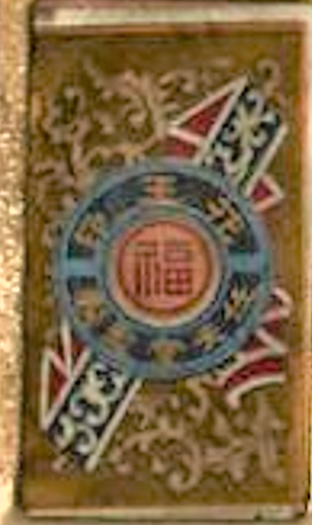 |
★★★★★★ Lost |
Appears in one of the photos by Yamauchi No. 10. Shares the same label design with Ginsekai. |
| Kikumaku (菊幕, Chrysanthemum Curtain) |
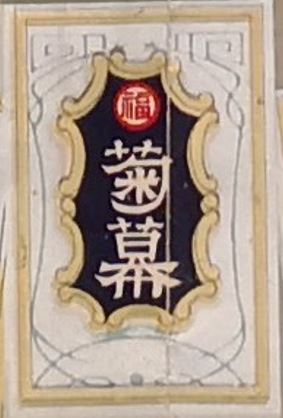 |
★★★★★★ Lost |
Appears in the Nintendo Brands and Chihofuda Poster from early Showa era. |
| Kikusui (菊水, Chrysanthemum Water) |
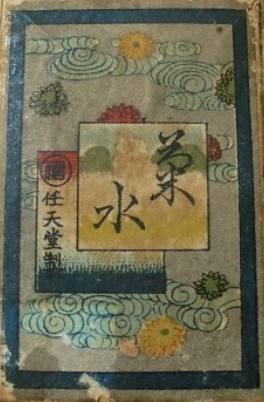 |
★★★★★ Unique |
Shares the same label design with Hagoromo. |
| Kinpo (金鳳, Golden Phoenix) |
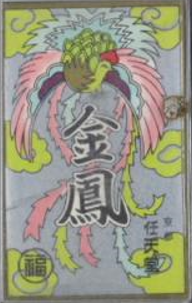 |
★★★★ Very rare |
|
| Kinpo (金寶, Golden Treasure), a.k.a. Geumbo (금보) |
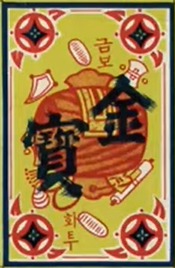 |
★★★★★★ Lost |
Label appears in a video by Kohjiro Kuchiki. As the label design suggests, this deck may have been exported to Korea or contained versions of hachihachi-bana with golden marufuku symbols on the bright cards. |
| Kinryu (金龍, Golden Dragon) |
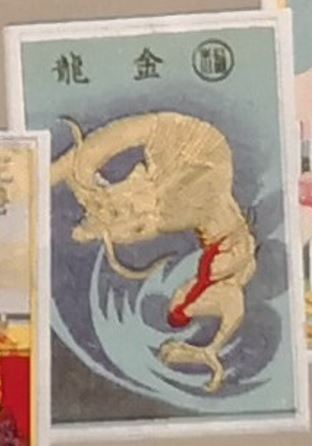 |
★★★★★★ Lost |
Appears in the Nintendo Brands and Chihofuda Poster from early Showa era. |
| Kinsekai (金世界, Golden World) |
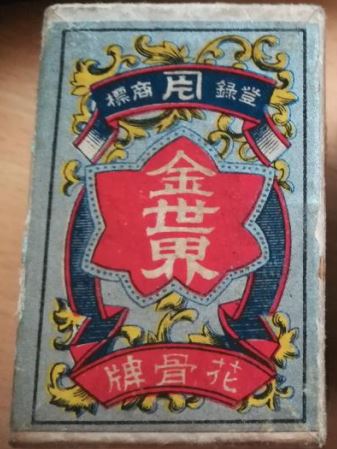 |
★★★★ Very Rare |
Produced by Nintendo for Kamigataya. |
| Kintengu (金天狗, Golden Tengu) |
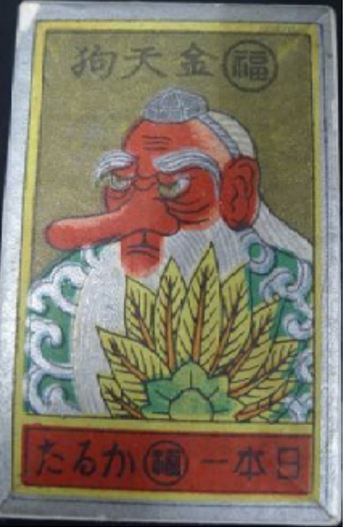 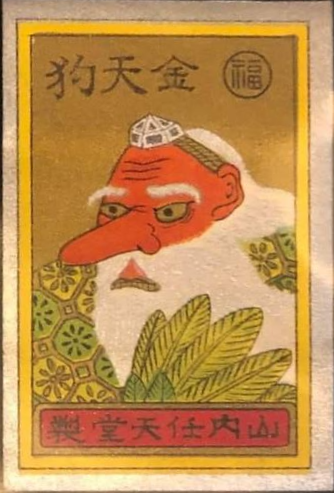 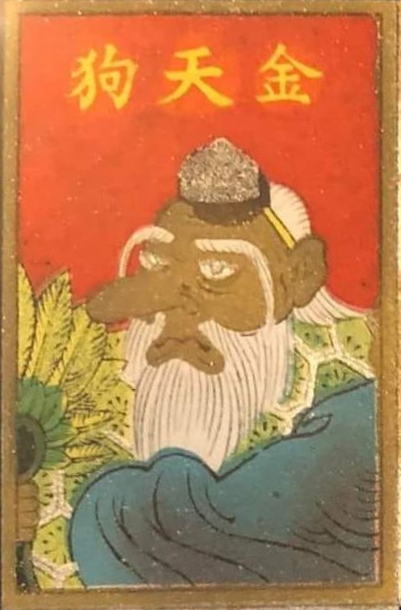 |
★ Common |
The brand Tengu was known by this name throughout the mid-20th century, and had a similar label design, but the Tengu is drawn slightly different. Same label as Gintengu, but the background is gold instead of silver. There was a label variant from 1945-1946 where the Tengu had gold skin instead of red, and the background was red instead of gold. |
| Koban (小判, Japanese coin) |
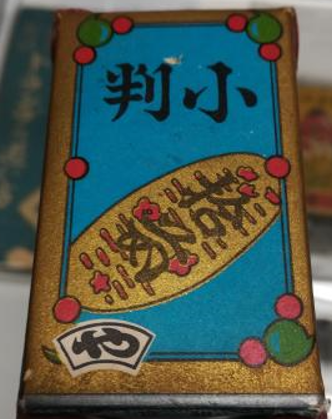 |
★★★★ Very Rare |
Produced by Nintendo for Iwata Honten. |
| Konishiki jirushi (小錦印, Small Brocade Mark) |
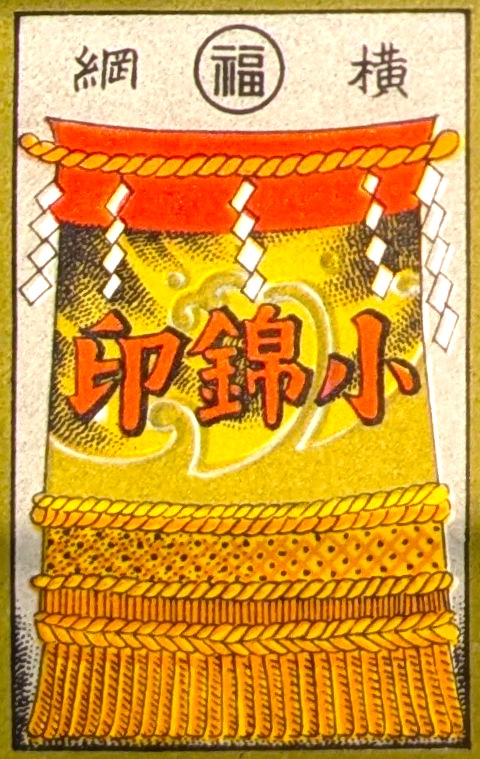 |
★★★★★★ Lost |
Appears in the Nintendo Brands and Chihofuda Poster from early Showa era. |
| Kumoizakura (雲井櫻, Heavenly Sakura) |
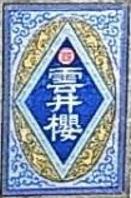 |
★★★ Rare |
Shares the same label design with Goshozakura, Asahi Sakura, Hyakuman-en, and Yaezakura. |
| Kyo Bijin (京美人, Beautiful Girl from Kyoto) |
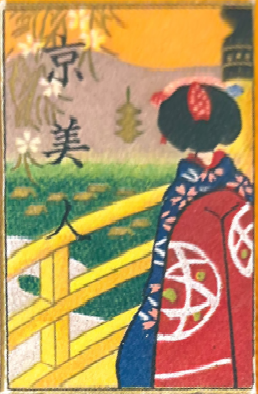 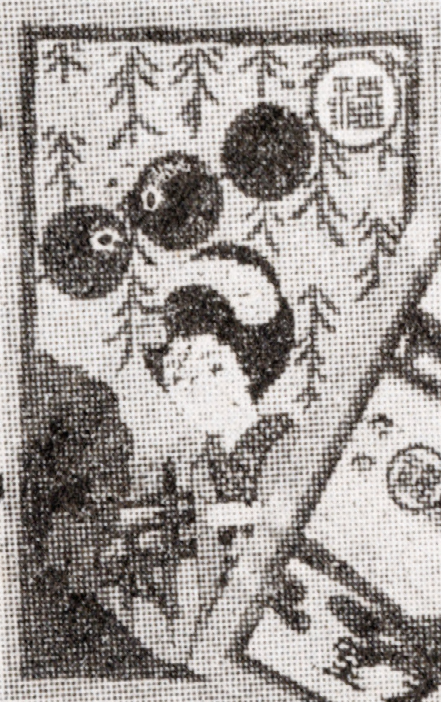 |
★★★★★ Unique |
An alternate label appears in a Nintendo ad from 1929, but it’s partially obscured and in black & white. |
| Kyo no Hana (京の花, Flowers of Kyoto) |
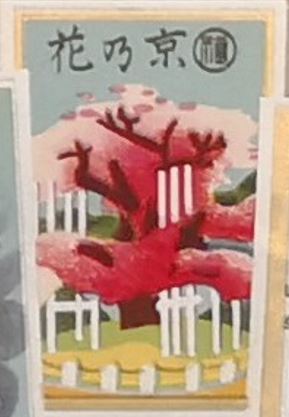 |
★★★★★ Unique |
Appears in the Nintendo Brands and Chihofuda Poster from early Showa era. Possibly a brand variant of Miyako no Hana. |
| Maneki Neko (招き猫, Lucky Cat) |
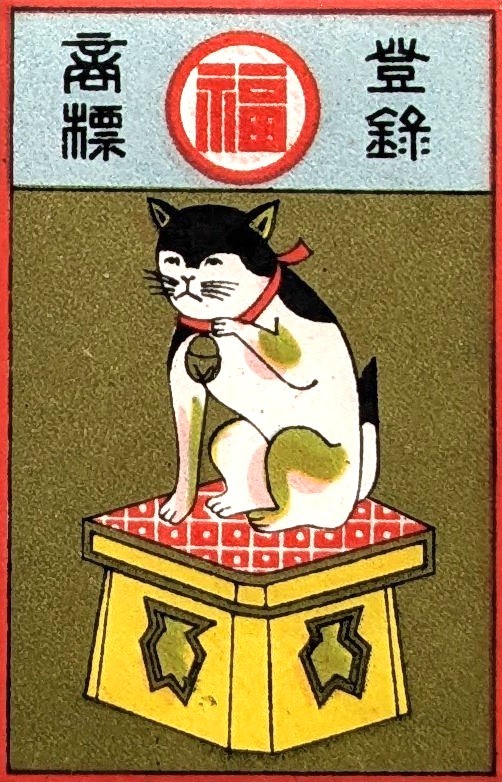 |
★★★★★ Unique |
Currently on display at the Nintendo Museum. |
| Manryo (万両, Ten thousand Ryo) |
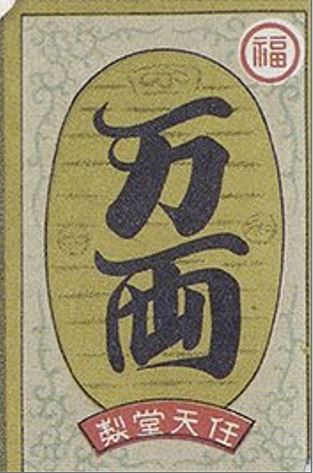 |
★★★★★★ Lost |
Appears in the Nintendo Company Guide 2019. Shares a similar label design with Senryo. |
| Marufuku jirushi (丸福印, Marufuku mark) |
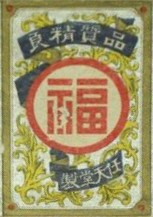 |
★★★★★★ Lost |
There is one example of a box with this label, but the contents are for a different hanafuda. Appears in the Nintendo Brands and Chihofuda Poster from early Showa era. The brand was represented by only a large Marufuku logo in the label. |
| Marufuku Sakura (丸福桜) |
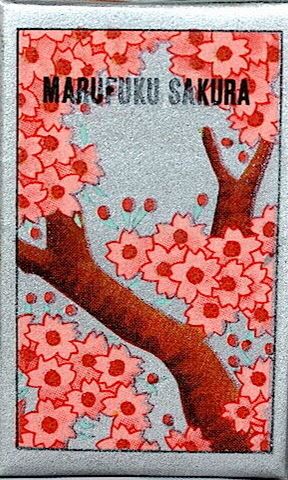 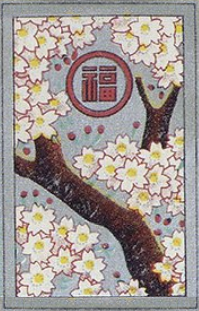 |
★★★★ Very rare |
Shares the same label design with Heian. Brand was written in Romaji on the label. An example from 1960 came in a box marked “Made in Japan" and “Black” in English; this was possibly an exported product. There was also a variant of the label where the brand is only represented by the Marufuku logo; it is difficult to tell if this label falls under “Marufuku jirushi” or “Marufuku Sakura”. |
| Masamune (正宗) |
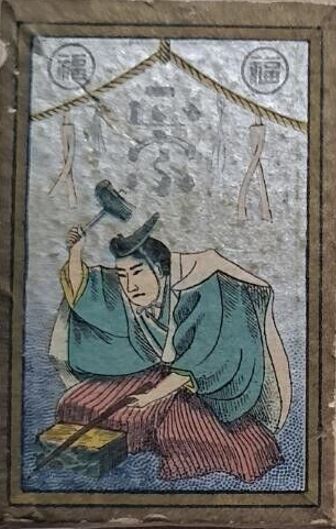 |
★★★★ Very rare |
Depicts Japanese Swordsmith, Goro Nyudo Masamune (五郎入道正宗). One of the earliest Nintendo trademarks. |
| Masayuki (正行) |
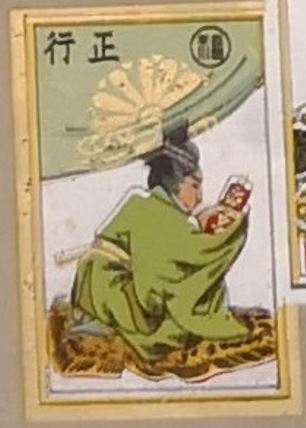 |
★★★★★★ Lost |
Appears in the Nintendo Brands and Chihofuda Poster from early Showa era. |
| Matsu jirushi (松印, Pine mark) |
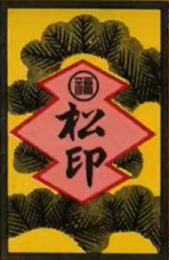 |
★★★★★★ Lost |
Label appears in a video by Kohjiro Kuchiki. Only used for shirofuda decks. |
| Miyakonishiki (都錦, Capital Brocade) |
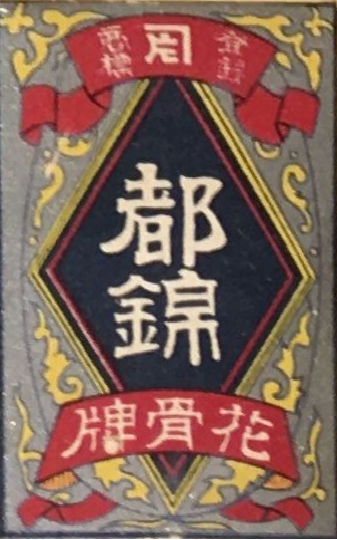 - - |
★★★★ Very Rare |
Produced by Nintendo for Kamigataya. |
| Momotaro (桃太郎, Peach boy) |
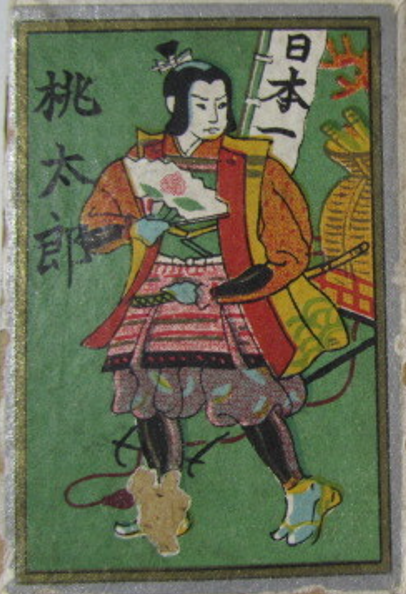 |
★★★★★ Unique |
|
| Mushi (虫, Insect) |
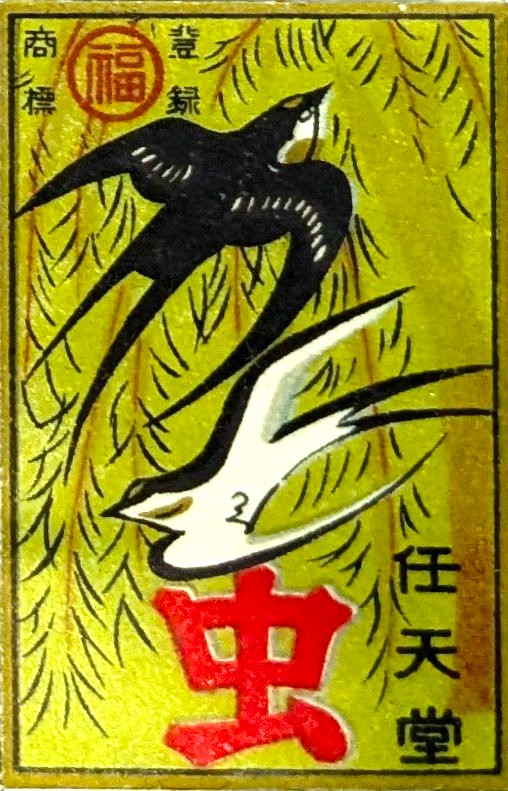 |
Appears in the Nintendo Brands and Chihofuda Poster from early Showa era. Despite the brand name, the label depicts two swallows under a willow tree. | |
| Mushibana (むし花) |
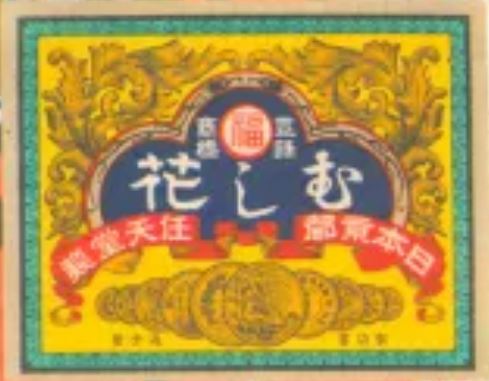 |
★★★★★★ Lost |
Appears in the Nintendo Company Guide 2015. |
| Oedo (大江戸, Great Edo) |
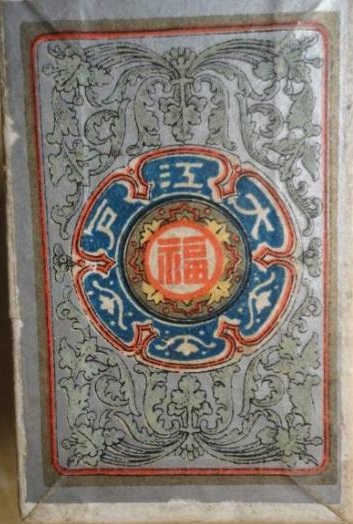 |
★★★★★ Unique |
Shares the same label design with Daioh. |
| Ohtengu (王天狗, King Tengu) |
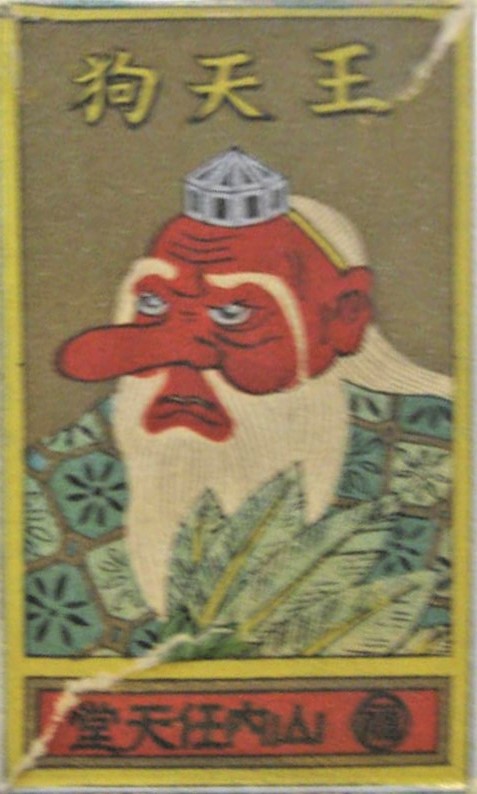 |
★★★★ Very rare |
Shares the same label design as the old design for Kintengu, which had a more elaborate clothing pattern. There’s an example that was intended for sale in Japanese-occupied Korea. |
| Otafuku (お多福) |
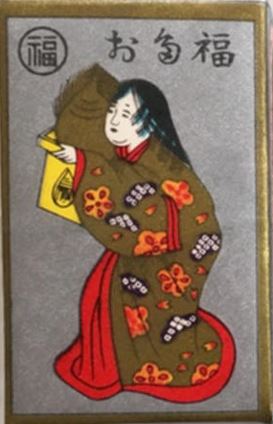 |
★ Common |
One of the earliest Nintendo trademarks. |
| Ranko (蘭光, Orchid light) |
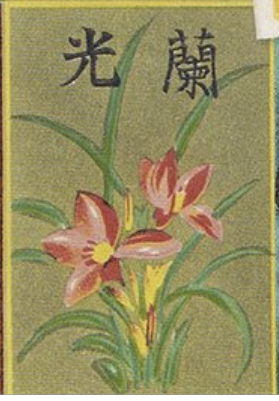 |
★★★★ Very rare |
Label appears in the Nintendo Company Guide 2019. Used in Dairenbana decks. |
| Sakura no Yama (櫻の山, Mountain of Sakura) |
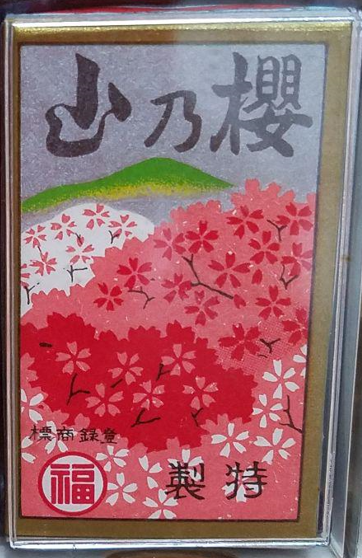 |
★★ Uncommon |
Label design looks similar to those of Hana no Yama and Tsukimi Yama. |
| Sanbazuru (三羽鶴, Three cranes) |
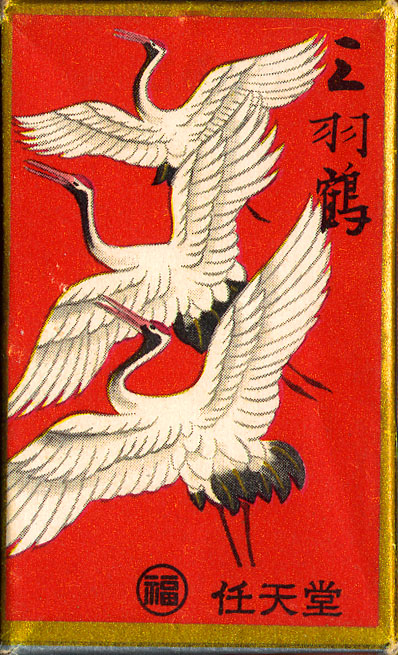 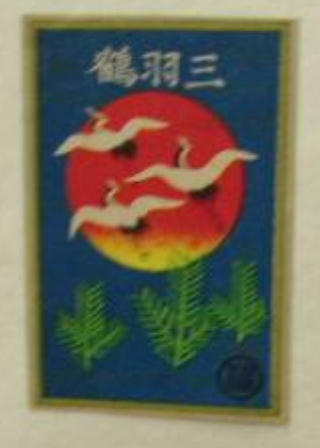 |
★ Common |
Label features three cranes in a red background. There was a label variant where there’s a red sun and blue background behind the three cranes. |
| San Hakushu (三拍手, Three Claps) |
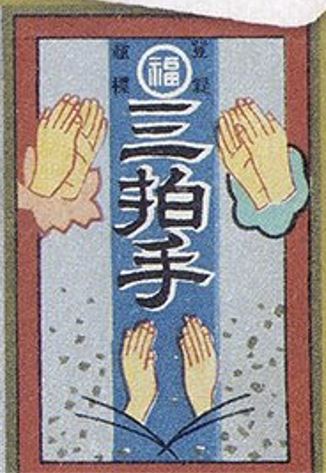 |
★★★★★★ Lost |
Appears in the Nintendo Company Guide 2019. |
| Senryo (千両, One thousand Ryo) |
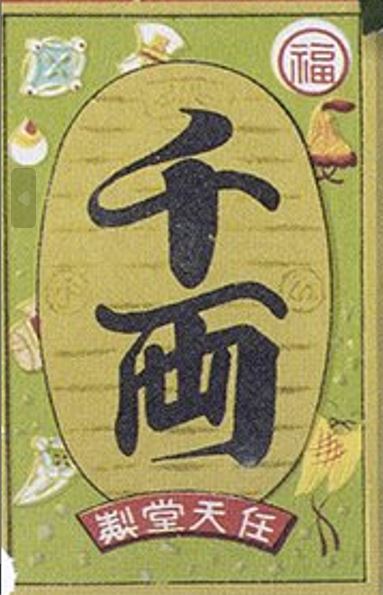 |
★★★★★ Unique |
Appears in the Nintendo Company Guide 2019. Shares a similar label design with Manryo. |
| Senzai (千歳, Live One Thousand Years) |
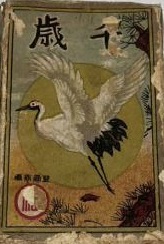 |
★★★★★ Unique |
Shares the same label design with Fukuju. |
| Shiko jirushi (四光印, Four Lights mark) |
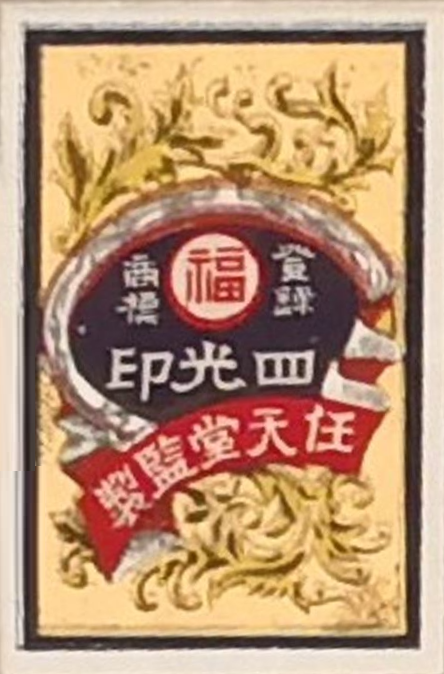 |
★★★★★ Unique |
Handprinted hanafuda deck. |
| Shotengu (勝天狗, Victory Tengu) |
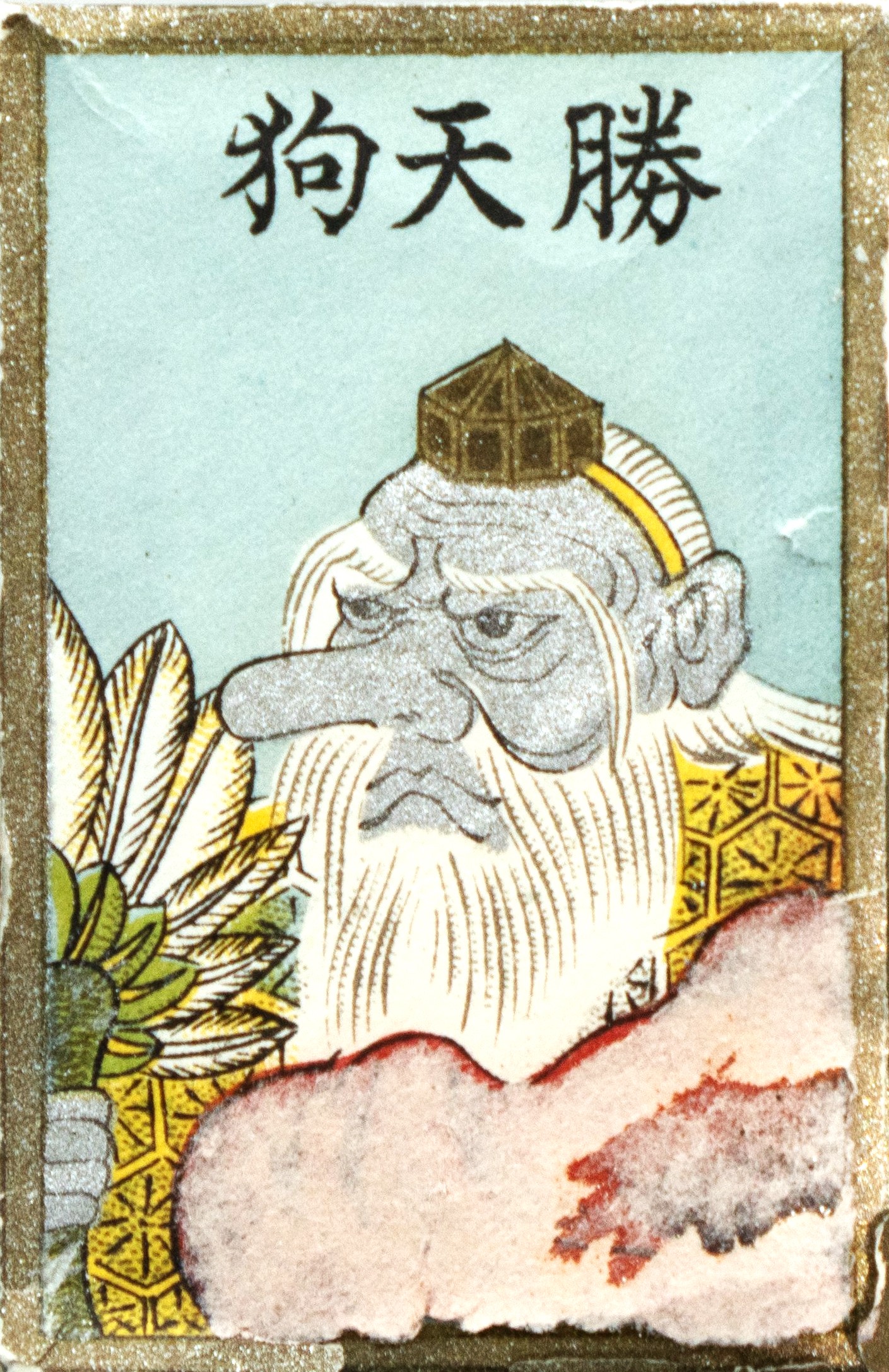 |
★★★★★ Unique |
Seems to be a label variant of Gintengu, with an illustration similar to the alternate design of Kintengu. |
| Showa (昭和) |
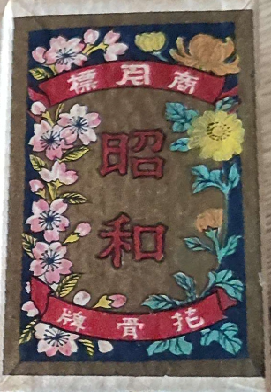 |
★★★★ Very Rare |
Produced by Nintendo for Kamigataya. |
| Shun’yu (春遊, Spring Outing) |
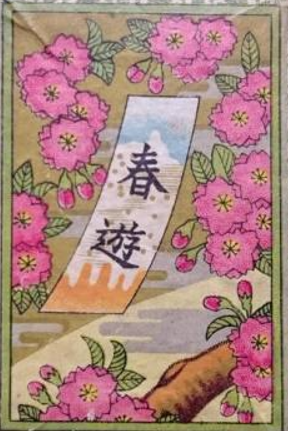 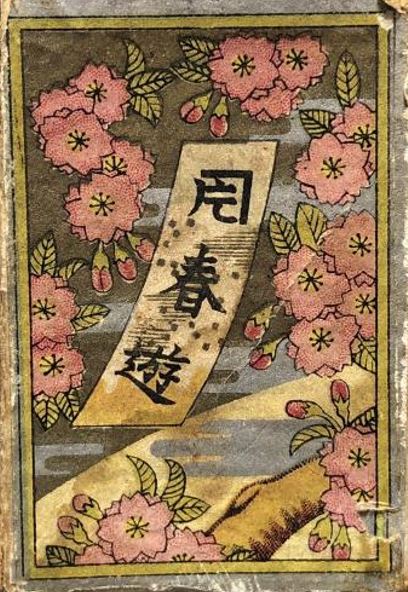 |
★★★ Rare |
Also released as a Kamigataya brand, still produced by Nintendo. One deck is currently on display at the Nintendo Museum. |
| Sukeroku (助六) |
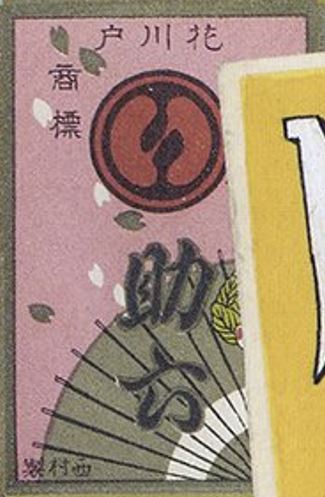 |
★★★★★★ Lost |
A Nishimura brand that appears in the Nintendo Company Guide 2019. Probably manufactured by Nintendo. |
| Taisho (大将, General) |
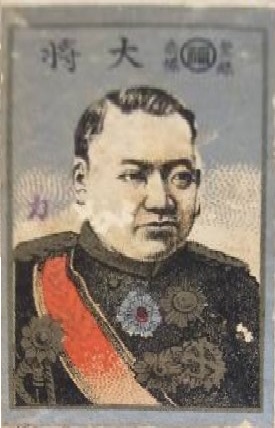 |
★★★★ Very rare |
Always featured in the side of wrappers until the 1970’s, yet existing decks are surprisingly hard to find. One of the earliest Nintendo trademarks. |
| Taisho Hana (大正花, Taisho Flower) |
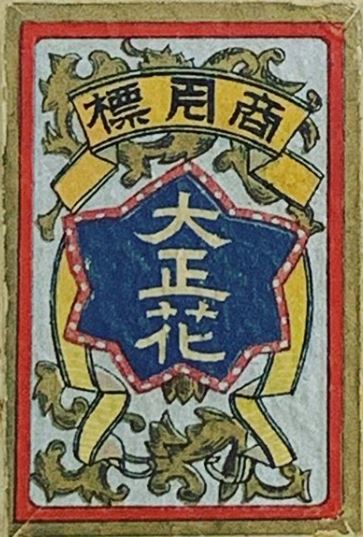 |
★★★★★ Unique |
Produced by Nintendo for Kamigataya. |
| Take jirushi (竹印, Bamboo mark) |
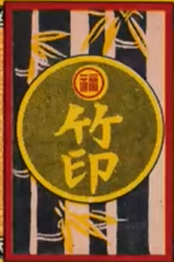 |
★★★★★★ Lost |
Label appears in a video by Kohjiro Kuchiki. Only used for shirofuda decks. |
| Take ni Suzume (竹に雀, Sparrow on Bamboo) |
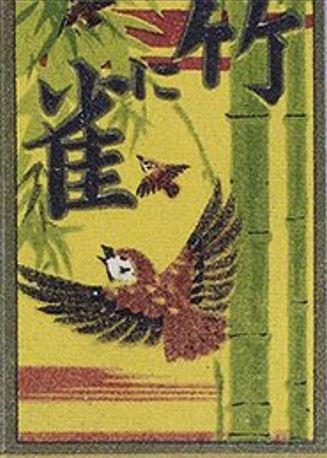 |
★★★★★★ Lost |
Appears in the Nintendo Company Guide 2019. |
| Tancho (丹頂, Red-crested Crane) |
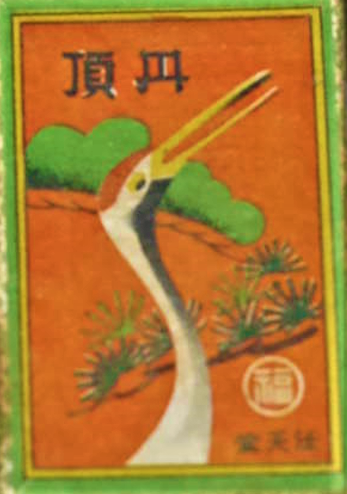 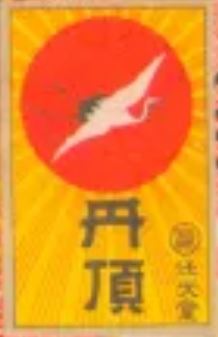 |
★★ Uncommon |
A label variant appears in the Nintendo Company Guide 2015. |
| Tateyama (立山) |
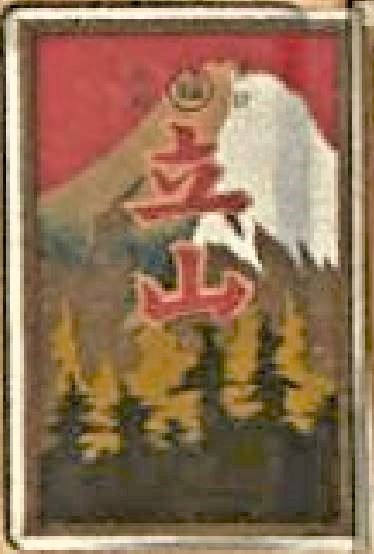 |
★★★★★★ Lost |
Appears in a photo by Yamauchi No. 10. |
| Tatsutagawa (龍田川, Tatsuta River) |
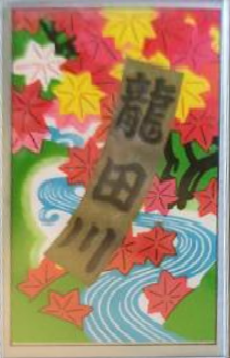 |
★★★★★ Unique |
Produced by Nintendo for Marunado. |
| Teasobi Karuta (手遊かるた, Hand-playing Cards) |
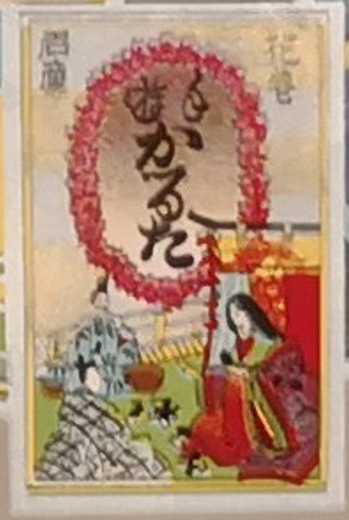 |
★★★★★ Unique |
Appears in the Nintendo Brands and Chihofuda Poster from early Showa era. This brand is also carried by Tsurudaya. |
| Tenkaichi (天下一, World’s No. 1) |
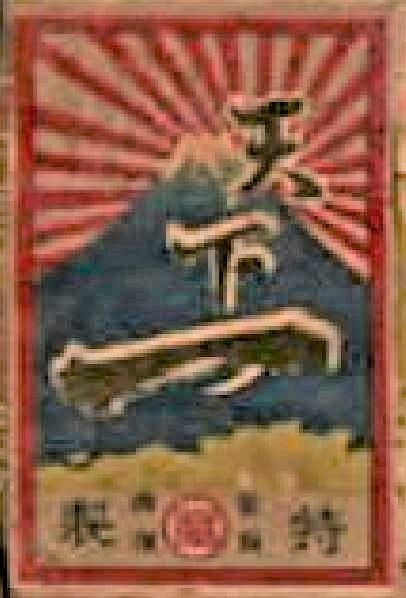 |
★★★★★★ Lost |
Appears in a photo by Yamauchi No. 10. |
| Tokiwa (常磐, Eternal) |
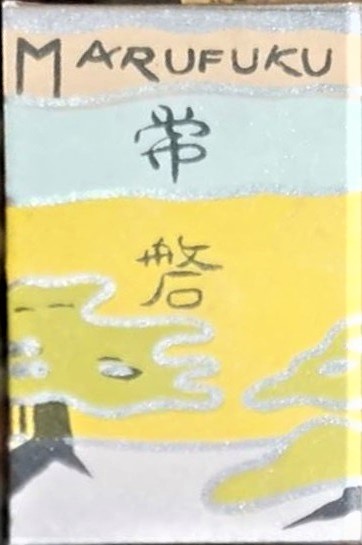 |
★★★ Rare |
Has the word ‘MARUFUKU’ written on the label in English. Mimics the label design of a Murai Bros. cigarette brand of the same name. |
| Tsukimi Yama (月見山, Moon-viewing Mountain) |
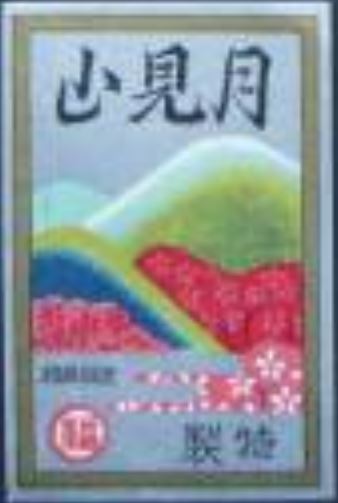 |
★★★★★★ Lost |
Shares the same label design with Hana no Yama. |
| Tsuru jirushi (鶴印, Crane mark) |
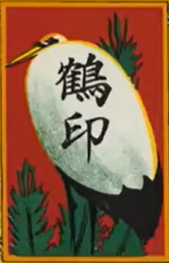 |
★★★★★★ Lost |
Label appears in a video by Kohjiro Kuchiki. Only used for shirofuda decks. |
| Ume jirushi (梅印, Plum mark) |
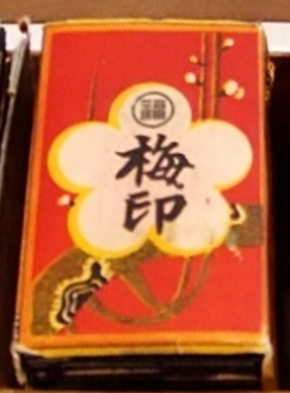 |
★★★★ Very rare |
Shares the same label design with Hakubai. Only used for shirofuda decks. |
| Umezuki jirushi (梅月印, Plum Month mark) |
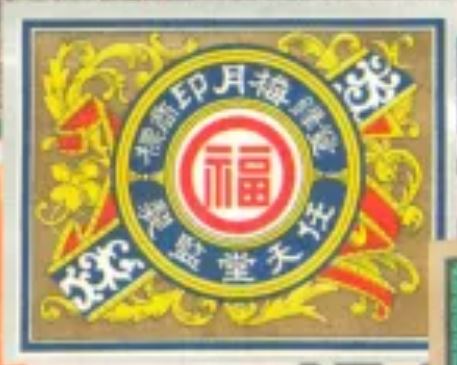 |
★★★★★★ Lost |
Shares the same box label as Ginsekai and Oedo jirushi. Name refers to the fourth month of the Chinese calendar. |
| Yaezakura (八重桜, Double-layered Sakura) |
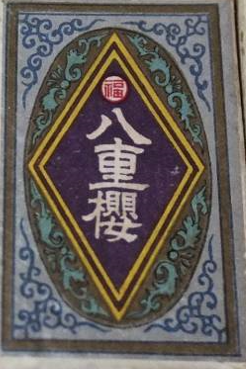 |
★★★★ Very rare |
Shares the same label design with Goshozakura, Asahi Sakura, Hyakuman-en, and Kumoizakura. |
| Yamatonishiki (倭錦, Ancient Japanese Brocade) |
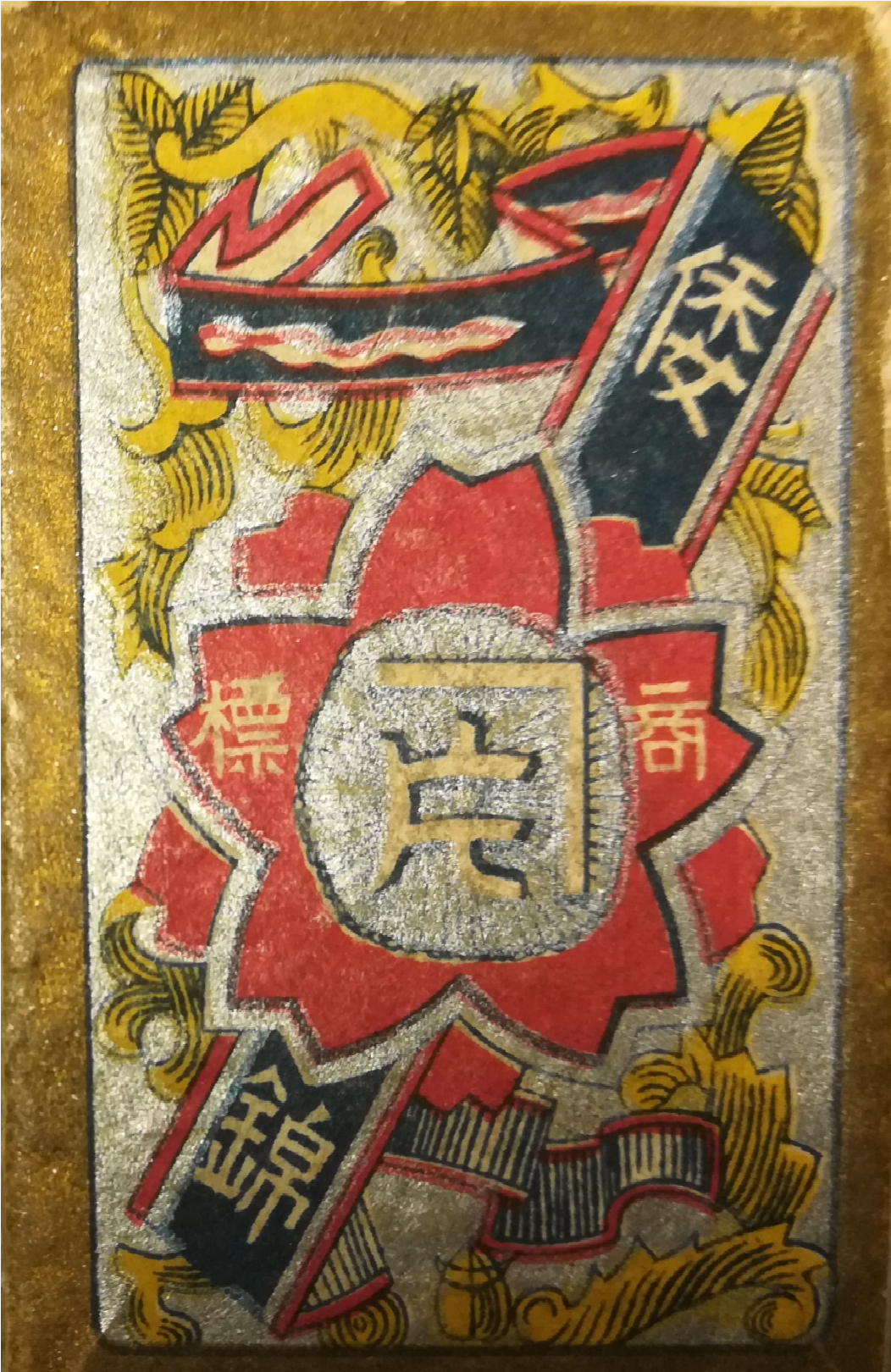 |
★★★★★ Unique |
Produced by Nintendo for Kamigataya. |
| Yayoi (やよひ, March) |
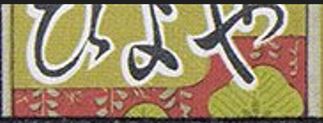 |
★★★★★★ Lost |
A portion of the label appears in the Nintendo Company Guide 2019. |
| Yoroshii (よろしい, another term for Yaku) |
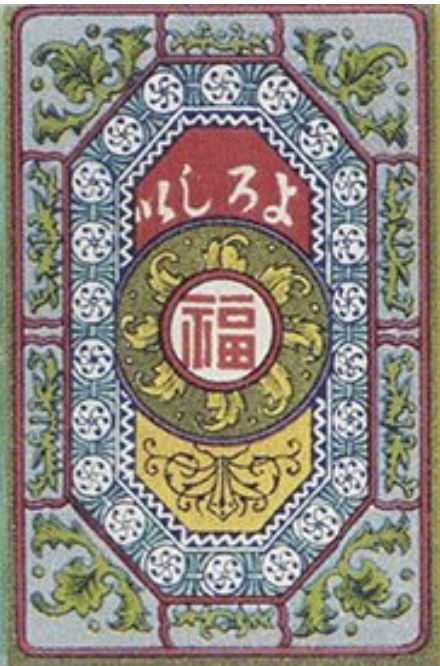 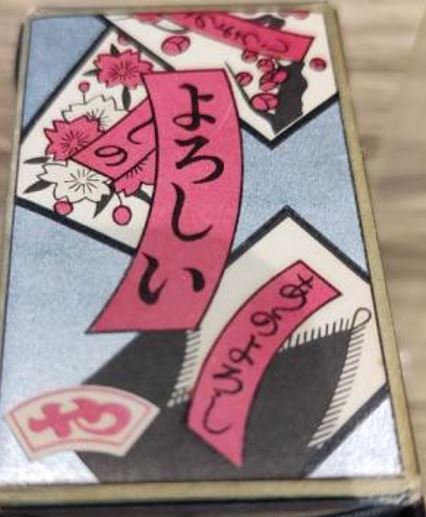 |
★★★★★ Unique |
Label appears in the Nintendo Company Guide 2019. Also produced by Nintendo for Iwata Honten, but it featured different label design. Tanaka Gyokusuido also carried this same brand, with the same label design as the Iwata Honten version. |
| Yu no Hana (湯の花, Flowers of the Hot Spring) |
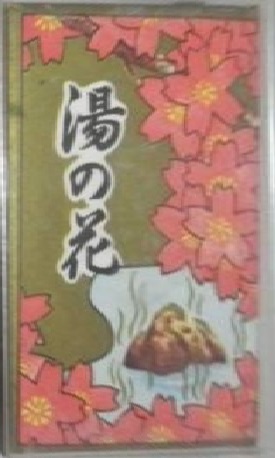 |
★★★★★ Unique |
In addition, Nintendo released Club Nintendo Hanafuda in 2007, which featured characters from the Super Mario on only the scoring cards, and all Chaffs were left in their original design. It was only available as a reward in the Club Nintendo Rewards Program, first as a red deck, then later as a black deck. The red deck was also released internationally, and included a translated rules for Koi-koi.
| Brand | Label | Packaging | Card details |
|---|---|---|---|
| Club Nintendo Hanafuda (クラブニンテンドー花札) |
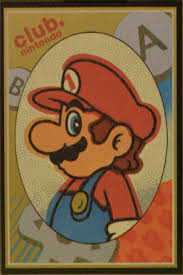 |
Beige-colored plastic box with a black/red flap that closes on both ends of the box. | Uncoated front; slightly matte back (Same as Miyako no Hana). Card pattern is standard Hanafuda but with Mario characters on all scoring cards. |
And finally, Nintendo released some hanafuda decks with gold and silver backs. Some of them are commemorative items, and released in extremely limited quantities.
| Brand | Box | Rarity | Notes |
|---|---|---|---|
| Kin-Gin (金銀, Gold-Silver) |
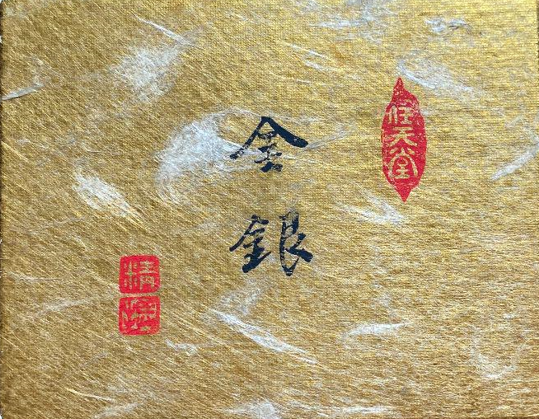 |
★★ Uncommon |
Came as a set of Gold-back and Silver-back decks, in a large gold colored carboard box. Each deck is wrapped in cellophane wrapper only, and encased in two-piece plastic box with a clear top and a transparent gold-colored bottom. The cards themselves have a foil finish on the front and shiny metallic finish on the back. |
| Tokusei Hanafuda (特製花札, Special Hanafuda) |
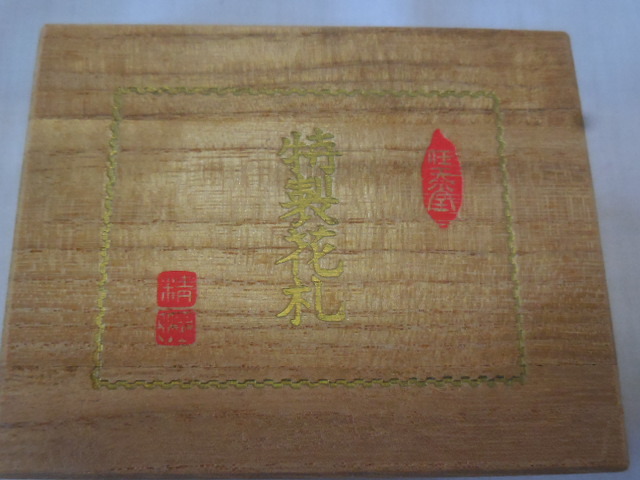 |
★★★★★ Unique |
Released sometime between 1975-1985 (possibly 1978). Came as a two-deck set, in a large paulownia box with a pull cord to elevate the decks from the box. Insert describes the set to be a 20th anniversary gift for something, and used gold and silver leaf. The decks were wrapped in textured gold or silver foil wrapper, with ‘特製花札’ marked on them. It is unknown what the cards inside look like. |
| (No brand) | 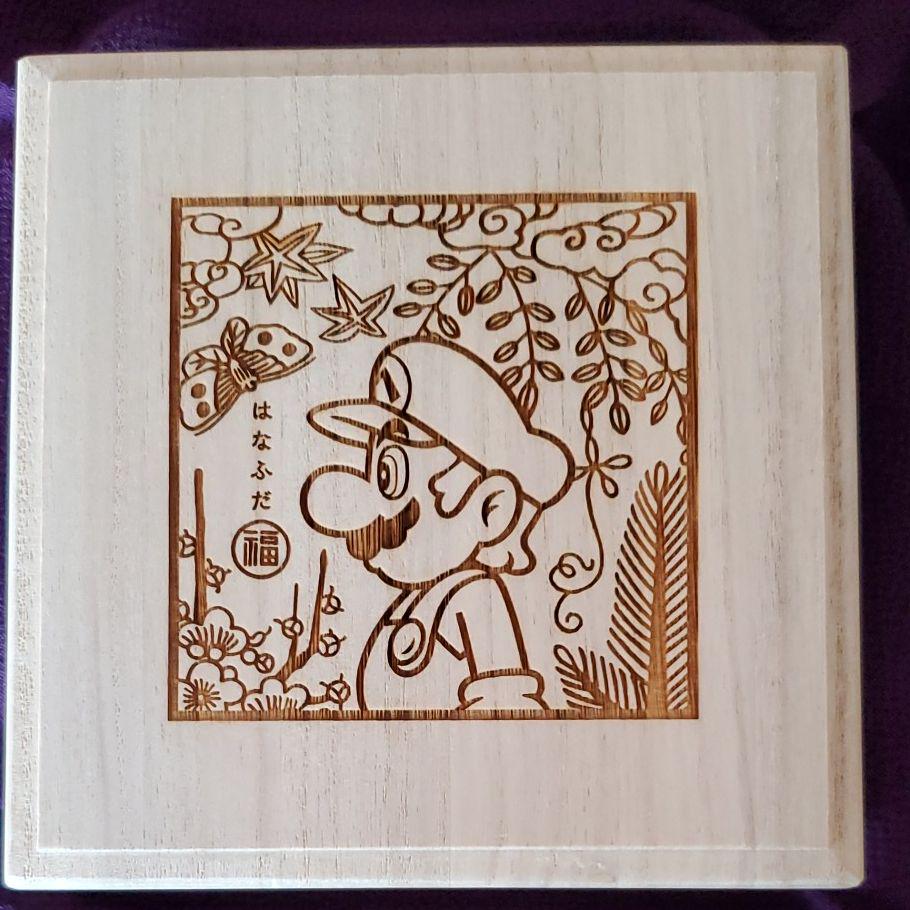 |
★★★★ Very rare |
Released in commemoration of the Nintendo Headquarters Development Building on June 2014. Came as a set of Gold-back and Silver-back decks, in a very large paulownia box with Mario engraved on it along with other hanafuda motifs and the word はなふだ (hanafuda) and the Marufuku logo. The box itself is wrapped inside a purple cloth with the Marufuku logo on it, and the entire thing is stored inside a plain cardboard box with the Nintendo logo on it. The decks were not wrapped; only encased in a two piece plastic box with a clear top and black bottom. The faces of the cards have gold outlines on the gold deck and silver outlines on the silver deck. |
¶ Character Hanafuda Decks
In addition to the above, Nintendo has also manufactured various Character Hanafuda decks, which are usually available in limited quantities only.
| Brand | Date of Release | Notes |
|---|---|---|
| Beichō Family Warōtei | ca. 1974-1976 | Asahi Broadcasting Corp. |
| Carta de Flor | 2022 | Brownies Shop. Sold exclusively at the Brownies Shop website. |
| Dragon Quest Hanafuda | 2017 | Square Enix |
| Idolmaster Cinderella Girls: Koi-koi Cinderella | May 2016 | Bandai Namco. Available only as a prize during the 21st Dream LIVE Festival (From April 30-May 8, 2016), by reaching the top 300 or getting specific ranks (1,000, 1,500, 2,000, 4,000, or 7,000). The participant must also apply with a “special application ticket”, which can be obtained in gacha, until May 9, 2016. |
| Jojo’s Bizarre Hanafuda: Mori cards | 2009 | Bandai |
| Jojo’s Bizarre Hanafuda: Stone Mask | 2009 | Bandai |
| Jojo’s Bizarre Hanafuda: Golden cards | 2009 | Bandai |
| Kirby Hanafuda | January 2020 | Nintendo/HAL. Distributed by Ensky. |
| Pokemon Hanafuda | November 2013 | Pokemon/Nintendo/Creatures/Game Freak. Distributed by Movic. |
| Mario Pikachu Hanafuda | October 29, 2016 | Pokemon/Nintendo/Creatures/Game Freak. Sold only at Pokemon Center stores in Japan. |
| Snoopy Comic Hanafuda | October 2, 2010 | Bandai. Sold exclusively at the Premium Bandai website. |
¶ Other Promotional Hanafuda Decks
| Brand | Date of Release | Notes |
|---|---|---|
| Kogarashi Monjiro Hanafuda | 1970’s? | Contains standard hanafuda pattern. |
| Over The Century Hanafuda | ? | Contains standard hanafuda pattern. |